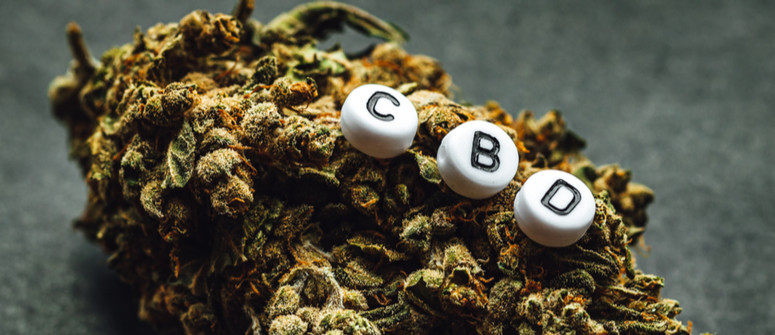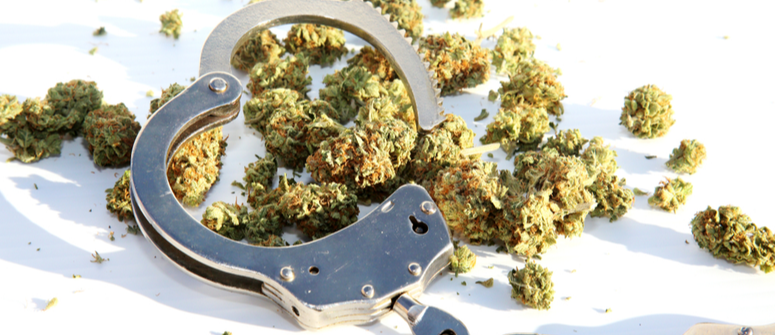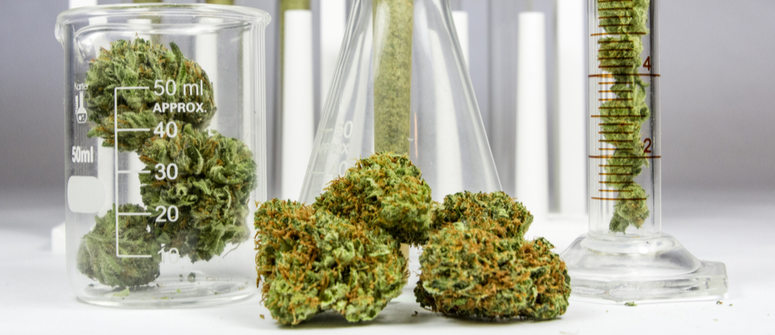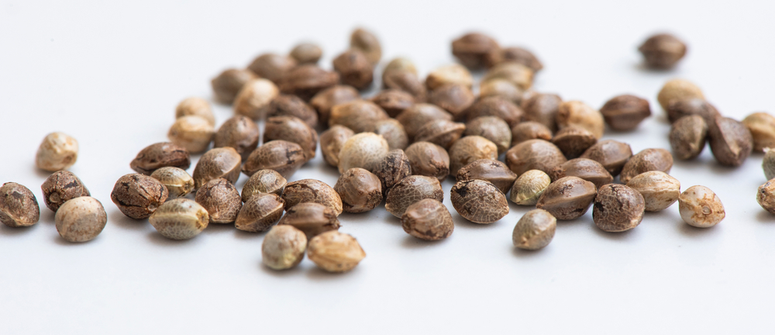How to grow high-CBD cannabis strains

If you're interested in growing high-CBD cannabis, you're not alone. But where does one start on their growing journey? And, is cultivating CBD-rich cannabis different from THC-rich weed? Here's a guide you can follow!
Contents:
The last few years have seen a ton of hype surrounding cannabidiol.
CBD, as it’s more popularly known, has drawn attention for its non-psychotropic status, lack of toxicity, and potential to exert a range of physiological benefits. A quick Google search will lead you to a bevy of studies and articles promoting CBD for a range of mental and physical conditions.
Given its popularity, growers and breeders have developed high-CBD strains to satisfy market demand, effectively ushering in a new era of cannabis. Unlike THC-rich strains that cater primarily to recreational users, these variants are intended either for potential therapeutic use or to promote general well-being.
If you love your cannabidiol, or have a vested interest in growing high-CBD strains, you’ve come to the right place. Below, we’ll shed some light on the nature of CBD strains, as well as their benefits, legal issues surrounding cultivation, and suggestions for the top CBD-rich strains to grow at home.
What Is a High-CBD Strain?
When we talk about cannabis, we tend to focus on its psychotropic tendencies—aka the “high”. We largely have the cannabinoid THC to thank for this phenomenon. In a nutshell, the higher the THC level, the harder a strain hits.
High-CBD strains, on the other hand, do not exert a high (unless they also contain a hefty share of THC as well). But, on its own, CBD doesn’t alter consciousness in any perceptible way. Instead, it works “under the radar” to support the body’s desire for balance.
For this reason, among others, CBD is also being considered for its clinical potential. Preliminary investigations have sought to determine CBD’s ability to relieve and/or treat various conditions; and, though very few conclusions on its therapeutic potential can be made, there are cases where CBD has been approved for a specific medical use.
The development of high-CBD strains took years of crossbreeding and experimentation, but it has certainly opened up a lot of possibilities throughout the cannabis community, and beyond.
Benefits of High-CBD Strains
According to consumers, CBD could hold a ton of potential benefits. Take this 2018 study for example, which surveyed a group of CBD users over a three-month period.
In total, 62% of respondents claimed they used CBD as a treatment for a specific medical condition, and 36% reported that cannabidiol helped “very well by itself”. While some adverse effects were recorded, one in three users said they were “non-serious”.
These findings are good indicators of how potentially beneficial high-CBD strains are. Moreover, apart from its use in specific clinical settings, CBD is also frequently used as a daily supplement of sorts, to enhance wellness and overall health and vitality.
Is It Legal To Grow High-CBD Strains?
Given the good PR behind CBD, it’s easy to presume that it’s legal to grow everywhere. Sure, most of the world is on board with legalization. However, some countries still do not allow for the cultivation of CBD-rich strains.
Let’s first take a look at Europe. In Switzerland and the Czech Republic, for example, public selling of CBD isolates is permitted. Italy, however, remains in a grey area with its constantly changing laws regarding hemp. Then there’s Slovakia, which prohibits nearly all facets of the CBD industry.
In the United States, it all depends on how the CBD is sold. According to the Food and Drug Administration (FDA), there must be compliance with applicable laws; the primary set being the Federal Food, Drug, and Cosmetic Act.
For growers, your best bet would be to consult local lawmakers and familiarise yourself with the CBD rules in your jurisdiction. Generally, penalties for growing a few CBD-rich plants at home are minimal, especially if THC levels are low, but there's no guarantee you won't be persecuted if caught.

What Is the Difference Between High-CBD Strains and Hemp?
Hemp and high-CBD cannabis describe the same species. Yet, they do have their differences depending on the context.
Hemp is a little easier to classify; it describes cannabis plants bred to contain negligible levels of THC. Specifically, in most of Europe, the legal THC limit in hemp is 0.2%, while the US cutoff is 0.3%, as dictated by the 2018 Farm Bill. In either case, this amount of THC is too low to cause a high if ingested.
Hemp has long been used for industrial purposes, and for its highly nutritious seeds. It's only recently it has also become the main raw material used to make CBD products (given its widespread legality).
True high-CBD strains (aka CBD-rich strains) contain just that—a lot of CBD. Though hemp has more CBD than the average recreational cannabis strain, it pales in comparison to pants bred specifically for CBD content. See, whereas hemp has a multitude of purposes, high-CBD cannabis is grown almost exclusively for its cannabidiol.
Legality is generally where the biggest distinction between hemp and CBD-rich cannabis comes into play. While a high-CBD strain can be non-psychotropic and contain almost no THC, if levels are even slightly above the cutoff point, it is not legal to grow according to the terms described above.
A little confusing, but here’s the takeaway; both hemp and high-CBD strains prioritise cannabidiol content and are generally non-psychotropic. The former, however, is much more regulated and steadfast in its definitions than the latter.
Is Growing High-CBD Cannabis Different Than Growing Normal Weed?
For the most part, the steps for growing normal weed and high-CBD cannabis are the same. Both require the same elements of water, fresh air, adequate light, and nutrients. The only difference is that the latter contains less THC.
Genetics will by and large dictate a strain’s CBD content, although ideal cultivation practices can help to maximise CBD levels, similarly to growers working with THC-rich weed.
Also like THC, growers of CBD strains shouldn’t wait too long to harvest, as CBD will begin to degrade with prolonged exposure to the elements. Other than that, the growing process is about the same no matter how you look at it. In fact, you can’t really tell if a strain contains CBD by looks (or smell, for that matter) alone; it’s all about the cannabinoids produced in the buds!
Research on Growing Hemp Plants With High CBD Content
Especially now that hemp is such a big industry, with the raw material being used to make all sorts of CBD products, producers and home growers have been looking to optimise the growing process for maximum gain. Luckily, this 2011 study named three specific factors to express high amounts of CBD in industrial
• Reduced exposure to rain
• Warmer air
• Warmer soil temperature
These factors mainly apply to outdoor growing, with higher temperature conditions being the common denominator. Research has yet to observe indoor growing in this regard, but it’ll be best to operate at a temperature that’s at least above 20°C/68°F. Also, try to avoid overwatering.
How To Increase CBD Levels When Growing Weed
So, what about boosting the CBD levels of your homegrown cannabis strain? It is possible! Consider these four steps to maximising the cannabidiol content of your high-CBD strain.
Choose the Right Genetics
High CBD content is determined primarily by genetics. So if you really want to rake in some seriously CBD-rich buds, right from the jump you’ll want to get your hands on strains that develop CBD percentages well over 10%.
One of your best options is to use clones that have previously yielded plants with high amounts of CBD. And, of course, you can always grow cannabis from seed and achieve equally high CBD levels from individual plants.
Test Early
To be absolutely sure your plant is rich in CBD, you can ask a lab to run tests for you.
According to experts, the ideal testing time is around 3–4 weeks after seedlings sprout. This particular strategy will help you determine which plants are rich in CBD before they even begin to flower.
For those who don’t have the resources for testing, you’ll need to wait until you can sample your harvest. For this reason, it’s best not to leave genetics up to chance. Again, start out with a strain that’s guaranteed to produce ample CBD from the get-go.

Take Care of Your Plants
Just like any other living organism, a healthy plant will develop fewer problems. With your CBD-rich cannabis crop, avoid nutrient deficiencies, mould development, light stress, and any other issues that can decrease cannabinoid content.
Deprived, unhealthy plants tend to produce lower cannabinoid levels. So, put in the time and effort to properly take care of them. And don’t forget about the after-care! Drying and curing are important stages that maximise the cannabinoid content and overall quality of your buds.
In other words, don’t cut corners!
Harvest at the Right Time
As mentioned in an earlier section, harvest time plays a role in cannabinoid development. It’s important not to harvest too late, but there is also such a thing as doing it too early.
So, how do you know if you’re on the right track? Once you see about 60% of the resinous heads of trichomes (aka tiny hair-like structures) turn from clear to cloudy, that’s your cue to begin harvesting.
Best High-CBD Cannabis Strains
Now, if you’re looking for high-CBD strains to start with, we’ve got you covered. Here are some of our top recommendations. Each contains an abundance of CBD, and, although the THC levels vary, none of these strains will blast your mind into outer space or lock your body to the couch.
ACDC
Not to be mistaken for the legendary Aussie hard rock quartet, this strain is one that medical cannabis users will love. With only 1% THC and up to 22% CBD, ACDC won’t leave you in a psychotropic state whatsoever.
Upon toking, you won’t be bombarded with any heady sensations, but you will enjoy a nice, refreshing flavour profile. You can vape these buds while working, studying, or engaging in any other creative endeavour—without getting high.
Cultivators will be delighted to know that this strain reaches an average height of 150cm and delivers an impressive haul of CBD-laden buds in just 10 weeks of bloom. ACDC thrives in dry, warm temperatures and responds well to LST.
Solomatic CBD
This non-psychotropic indica-dominant autoflower boasts one of the highest CBD levels in the game (21%) alongside less than 1% THC. Introducing, Solomatic CBD.
Bringing a clear-headed, soothing sensation to the table, the experience is elevated even further by its sweet and fruity aromas .
Growing this plant is equally satisfying. Indoor cultivation will leave you with an average yield of up to 475g/m² indoors, and outdoors you’ll rake in around 150g/plant. All of this occurs just 10 weeks after seeds are planted in the soil.

CBD-Chronic
This one’s got a bit of a kick to it, but the balanced cannabinoid profile keeps things in check. If you’re looking for a good strain with a 1:1 THC:CBD ratio, look no further than CBD-Chronic.
Its THC percentage is at 5.4%, while cannabidiol levels are at 5.8%. While this may not seem like a lot of CBD outright, the combo of cannabinoids takes the edge off and leaves users relaxed—but not to their detriment. You can still go about your day as usual.
With an earthy and fruity flavour profile, it’s no wonder that CBD-Chronic is a favourite among all types of cannabis lovers. It’s also very easy to grow, with a 60-day flowering time indoors. Yields are also encouraging, with up to 600g/m² indoors.
CBD-Rich Strains: The Future of Cannabis Growing?
These days, cannabis is no longer just for getting high. Some people are after its potential holistic benefits, whether it’s for their physical or mental health.
Growing CBD-rich strains offers a different way to use the cannabis plant to our benefit. It just goes to show how much cannabis cultivation has evolved, and the huge impact it has on people’s lives.




